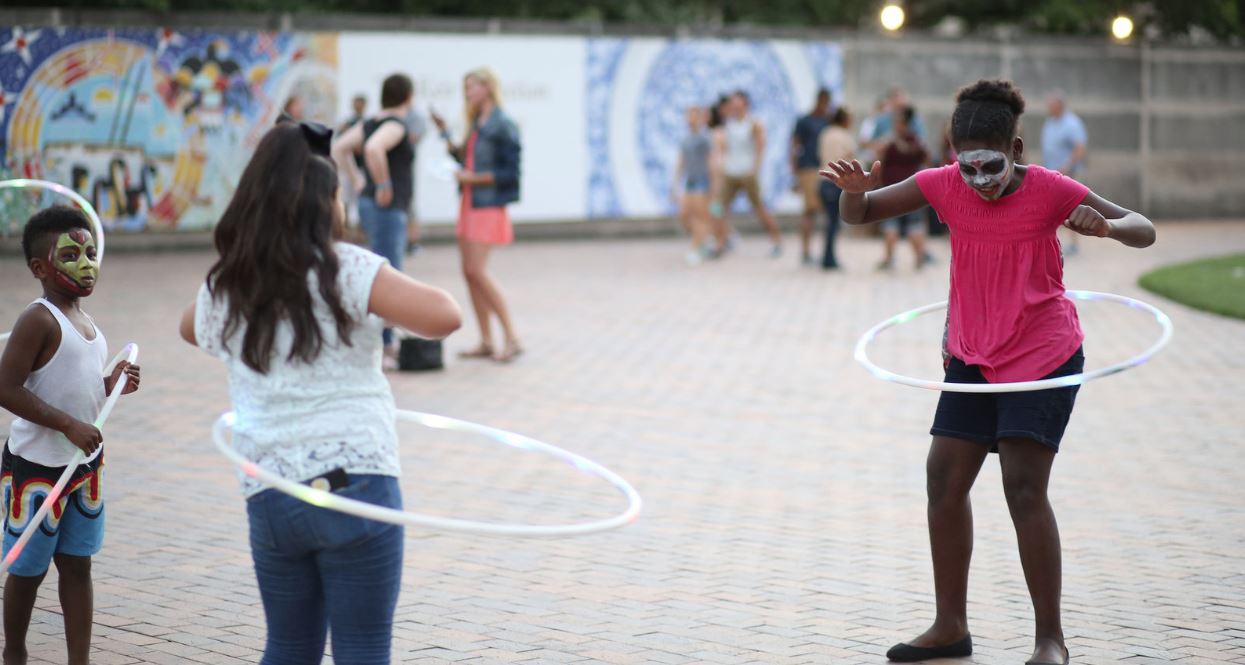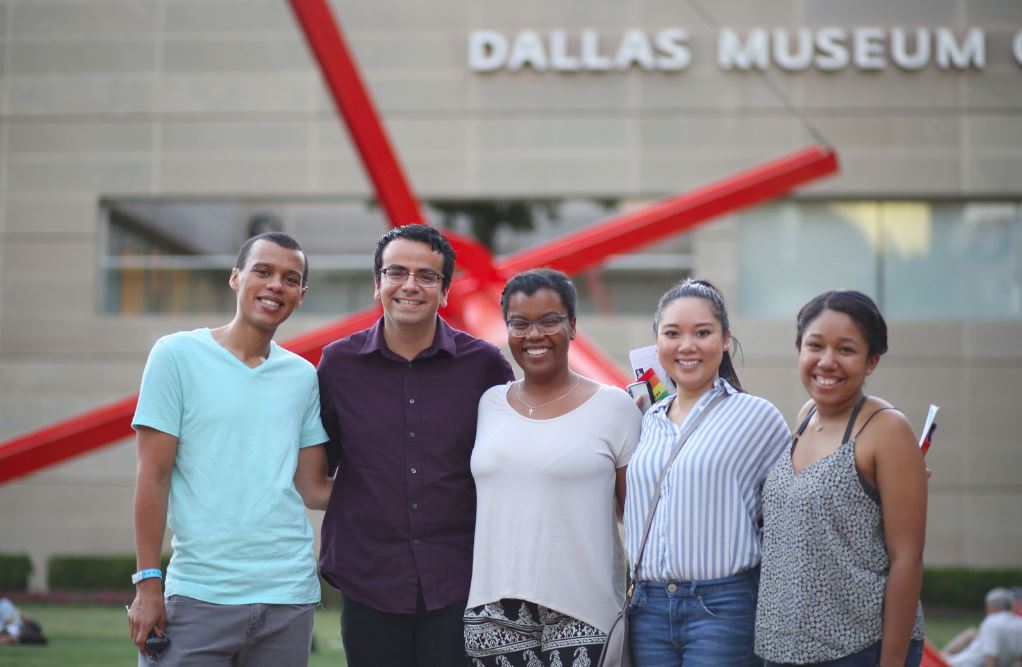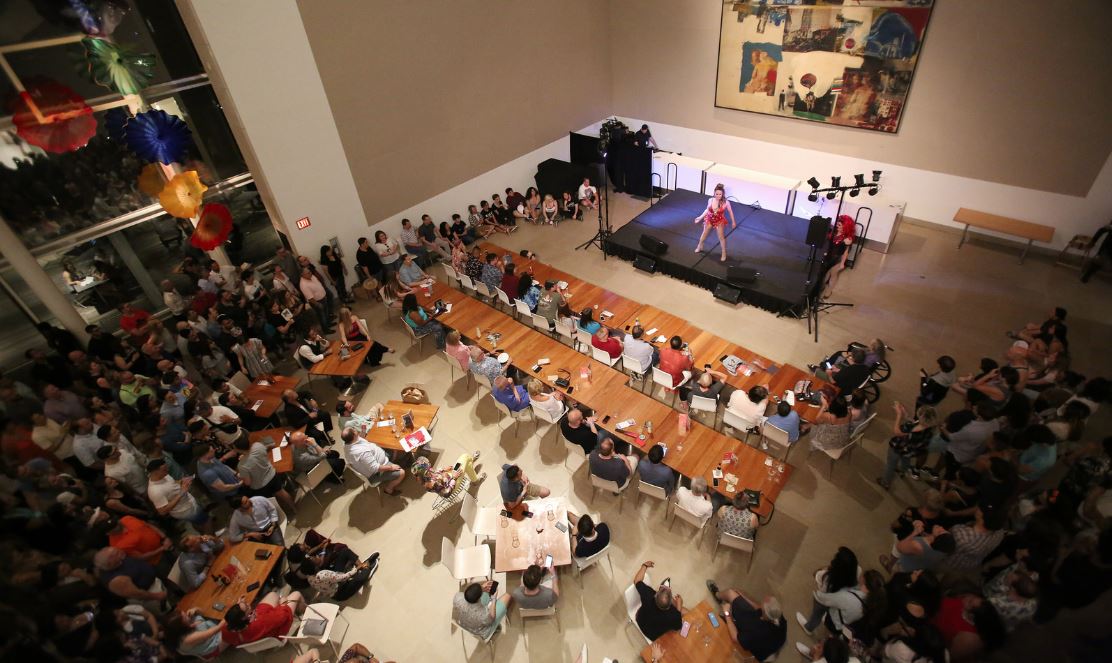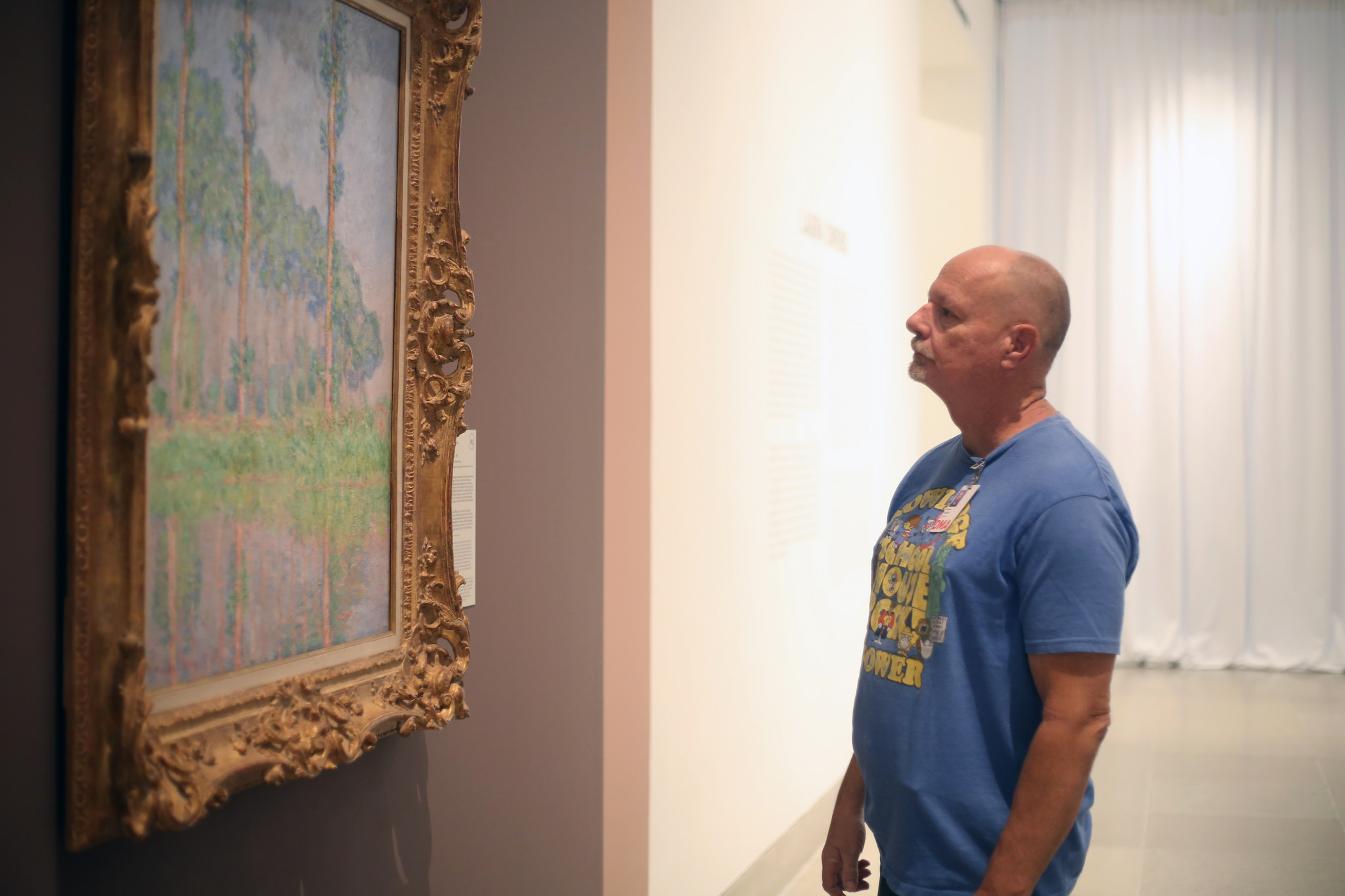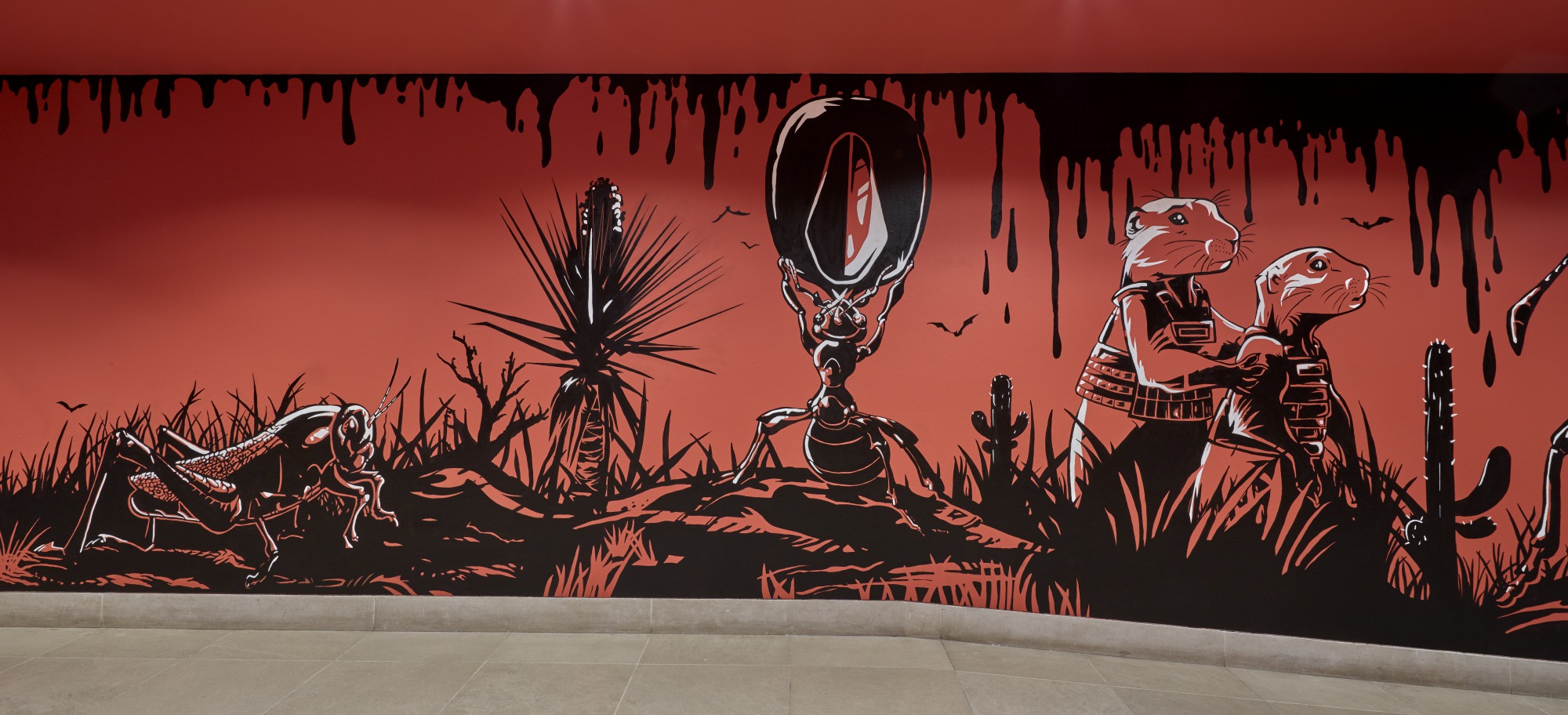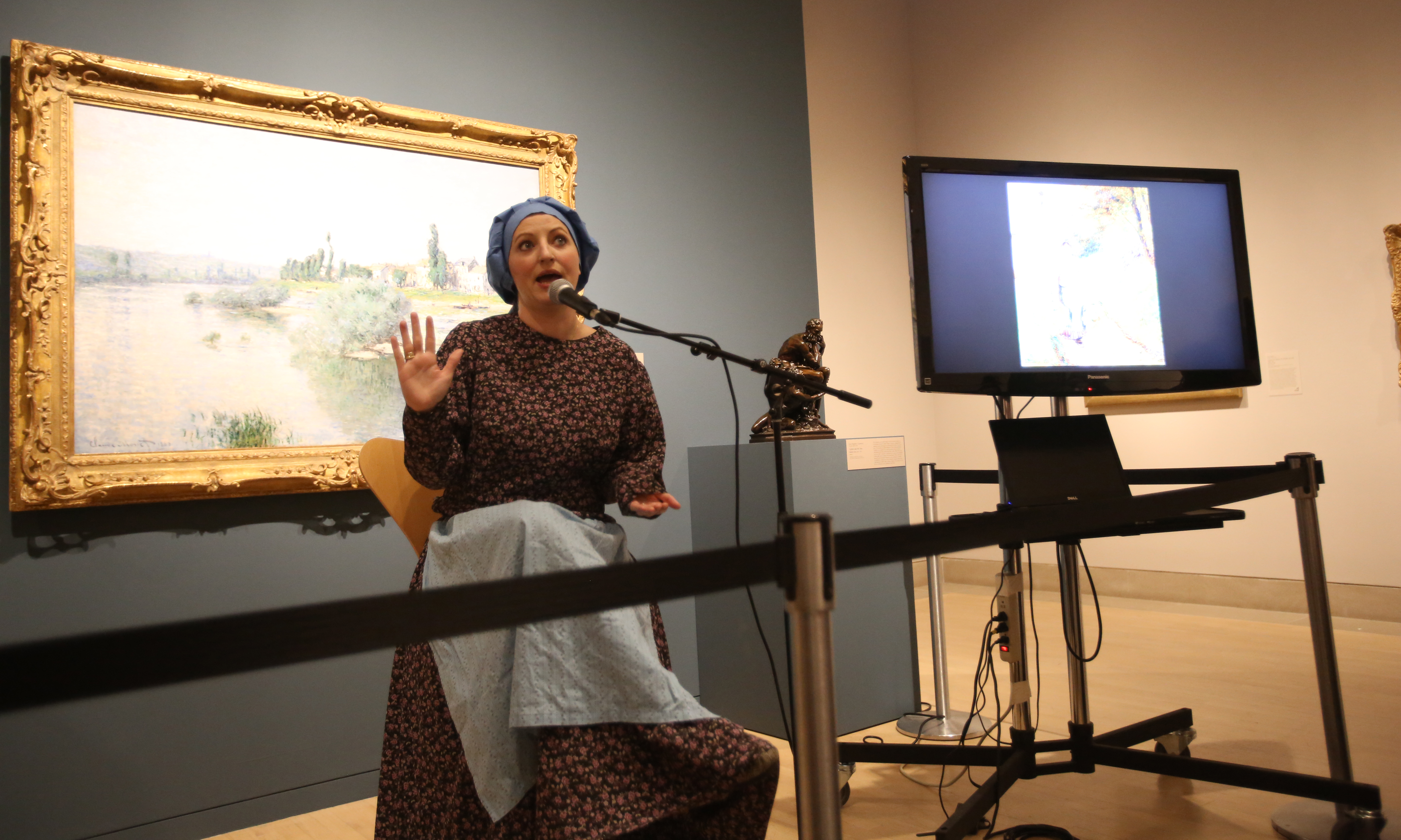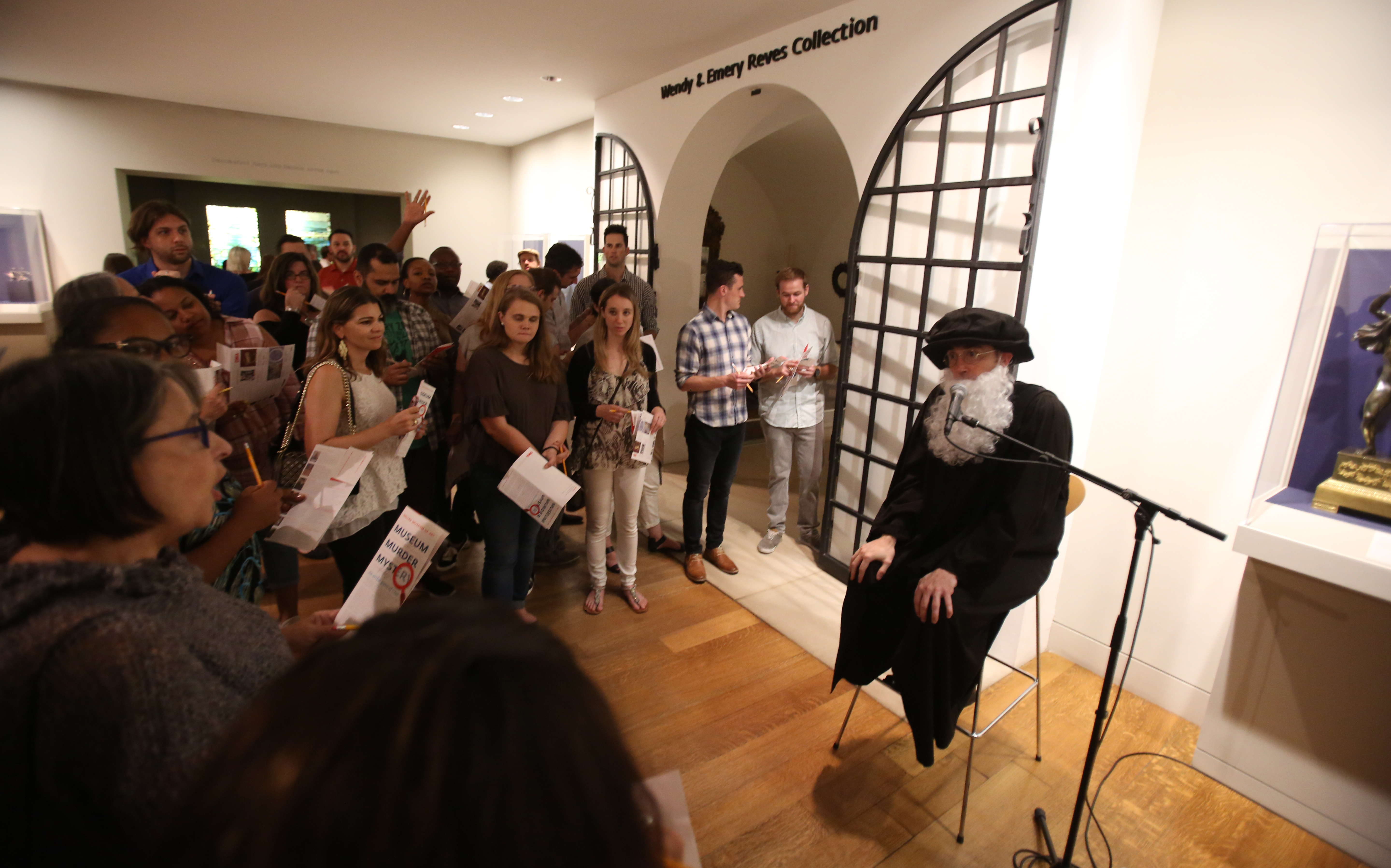When we found local artist Mel Remmers’s Instagram account, we were drawn to her distinct artistic style. With her wide-eyed, emotionally captivating portraiture, witty captions, and some sneak peek shots sprinkled into the mix, she reveals her work and process to her growing following in an engaging and down-to-earth way. Because we noticed elements of fashion, whimsicality, nature, and experimentation with textures and colors in her work, we were eager to invite her to a viewing of our Laura Owens exhibition. Inspired by Owens’s works, the paintings Remmers created welcome you into a fantasy world of their own.
- Photo Credit: Stevie Hudspeth
- Photo Credit: Stevie Hudspeth
- Photo Credit: Stevie Hudspeth
Photo Credit: Stevie Hudspeth
Check out our interview with Remmers about her process:
Tell us about yourself as an artist.
In February 2015, I bought a child’s paint set from a grocery store. Seeking to find a creative therapy after battling cancer and needing emotional repair, I posted my first attempt at painting on Instagram and I was shocked and excited by such a positive response. I was hooked! This started Instagram becoming part of the creative process. As my following grew fast, I sold my first painting after four weeks, and as of November 2017 my 400th sold.
My paintings started out as fashion-inspired female figures, and in time I added motion to them. Now I paint portraiture that provokes a mood with either dark shadows or the expressions in the eyes. I am also fascinated by light and have focused periods with black-and-white paintings as well as ink. The majority of my paintings consist of multiple mediums and tools such as gold foil and others as I have discovered them. Hand-painted wallpaper with a nature-inspired theme has become my most requested commission and my new obsession.
What was your first impression of the Laura Owens exhibition?
As I walked into the exhibit, my eyes drew on the immense scale, the bold and playful works. Then as I moved closer I was lost in the details of unexpected elements, heavily sculpted paint textures, and her no-fear use of PINK.
What did you find most inspiring about this exhibition?
Most notably, the grand scale of her work. I have a strong desire to “Go Big”—paint on walls or just use a larger canvas than usual. This connection brought that buzz to continue on that path.
Another inspiring spark was the variance of her work. The abstract collages flowing to whimsical childlike characters of animals was a delightful scene.
I was also thrilled to see her unexpected three-dimensional elements and use of materials like felt, and her beehive painting where it looked like bees were buzzing above the canvas.
What was the painting process for your pieces like?
As I walked away from the exhibit, reflecting and imagining this collaboration, I knew to go with my gut response. Fireflies were my first whisper, and I wanted to play off the forest scene where you find animals peeping throughout the painting.
Since I usually do not plan or sketch, I started with the trees and then water emerged. All of this is evolving while I am filming to Instagram, and my specific music choices have come to set the mood of where I am in the process.
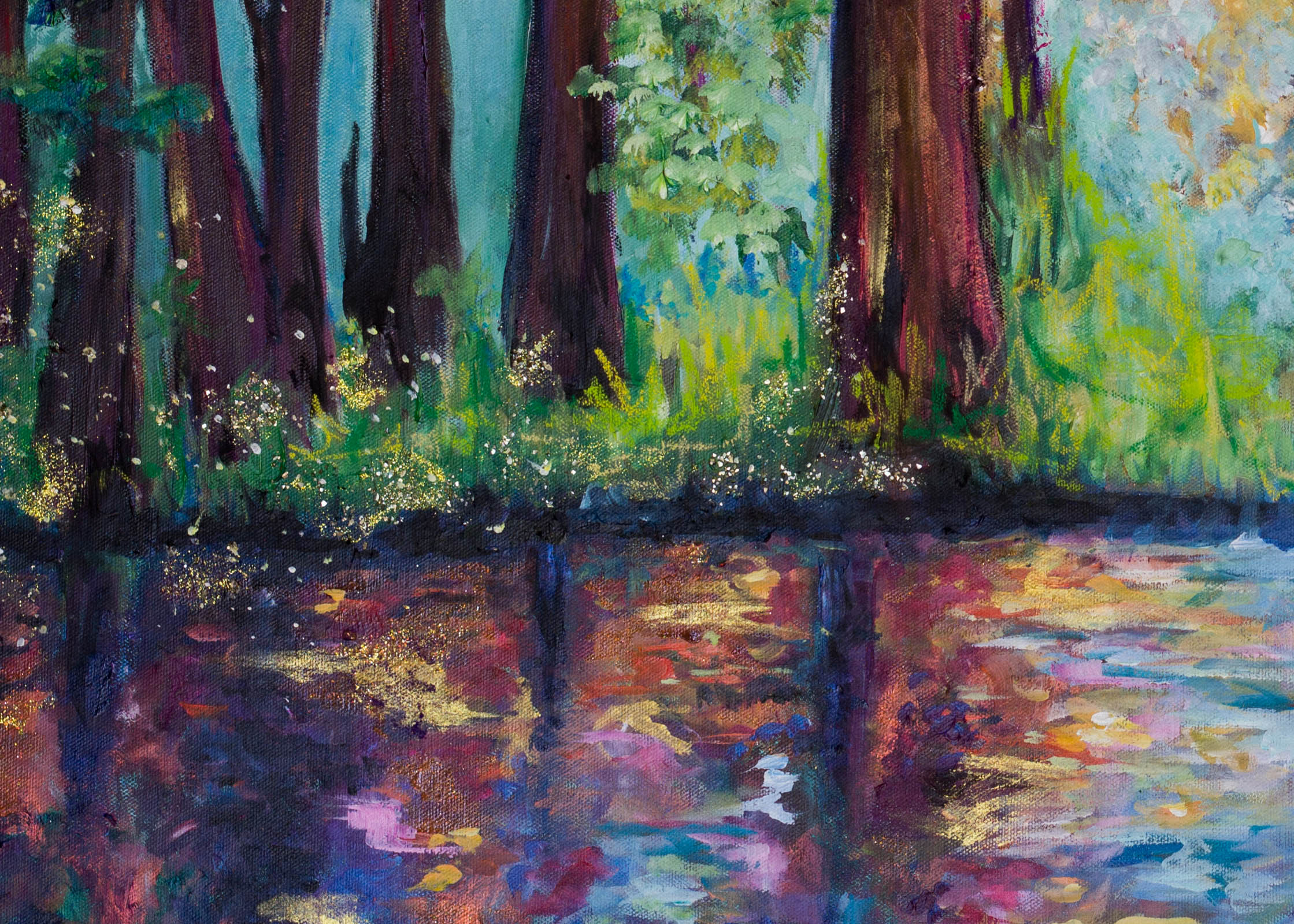
I am a fast painter so I wanted to be patient and take my time. That equaled four days of nine hours at a time, and that also included a second painting that I felt told more of the story. The water, with its intense color and light reflection of the first painting, became the continuation of the story in the second painting and introduced a new character, the glitter fox.
These paintings are made with acrylics, some oils, chalk, pastel, and ink, and the fireflies are made of tiny crystals and glitter glue.


What elements or themes from Laura Owens’s work did you incorporate into your pieces?
My collaborative theme became nature. I wanted to bring a sense of belonging. I usually focus on a feminine theme, and now she became a living part of it. Her dress inspiration was taken from a large impasto glob from one of Laura’s abstracts that I found crazy good. So her dress looks like a dripping, thick waterfall floating into the water.
Do you have any other takeaways from this experience?
My takeaway is LIMITLESS. In a world where the trending word is “brand,” Laura Owens does not have a limit to her visions or exclusivity. She goes from sky high drawings of cats to a wild abstract collage. Laura’s work has calmed my doubts of risk taking, opened a larger vision, and given my creations a wider world to live in and explore. And, glitter glue IS a medium.
Hayley Caldwell is the Communications and Marketing Coordinator at the DMA.




